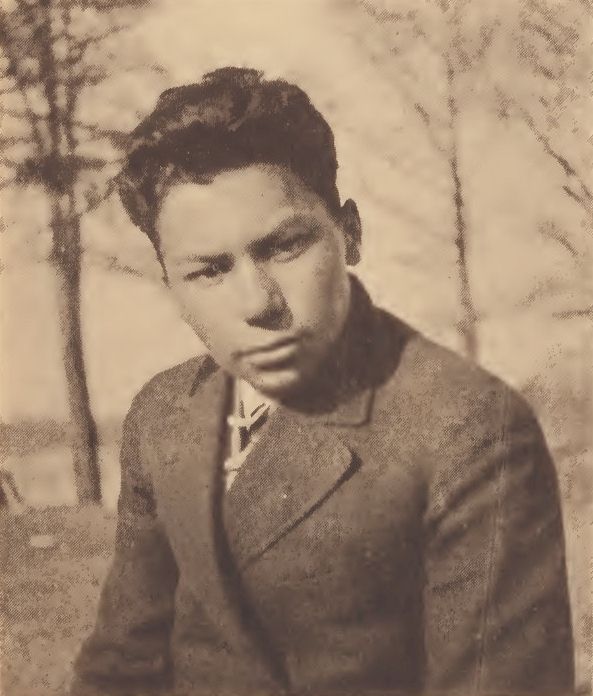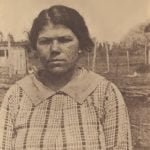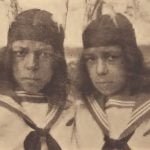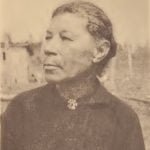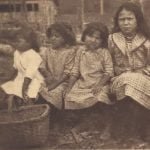On both shores of Chickahominy River, from its mouth to White Oak swamp where its waters rise, lived the Chickahominy tribe in apparently the most populated section of the Powhatan area (figs. 51, 69). Their descendants (figs. 26-36) occupy the same region, though they have no reservation. The Chickahominy headquarters, their first school and church, are at Samaria, a few miles from Roxbury in Charles City County. Recently some families have moved eastward toward the lower river, where the fishing is better, to the vicinity of Windsor Shades or Boulevard. Another Chickahominy church has been founded at the latter place and a school established.
The Chickahominy tribe history offers a problem in its political and social aspects, which seem to have been somewhat different from those of the Pamunkey. That they were not completely unified with Powhatan, we have occasional testimony. Mooney 1 summarizes the situation briefly: ”The powerful Chickahominy, however, although accepting him [Powhatan] as over-lord maintained their own home rule, and took an opportunity to put themselves under the protection of the English.”
Strachey adds that this group formed a nation so remote from being Powhatan’s subjects that they were even his enemies. Again he describes them as a warlike and free people who paid tribute to Powhatan but who would not allow themselves to be governed by any ”wirowances” (chiefs) from him.
In 1613 they went so far as to renounce their allegiance to Powhatan, and appealed to the English, whom they called Tassautessus Uttasantasough, ”shirt wearer,” to allow them to use that name for themselves, as a sign of affiliation. 2 We also learn from Smith 3 that the Chickahominy were governed by a body of priests and eight elders, and that their headman was called mangoap (which I venture to analyze as ”great man”: mango, great, -ap (-ape), man) in contrast to the Powhatan proper who employed the term wirowance (probably meaning ”he is rich”) for their chiefs. 4 A number of other points of minor differentiation might be mentioned, one being that the several Pamunkey native names of tribes are not known here. On the basis of the slight culture differentiation I have marked on the chart by a shaded line the Chickahominy apart from the Powhatan proper. The Chickahominy still offer a field of investigation. A number of economic survivals and much folklore are accumulating as the basis for a monograph on the tribe. Some words supposed to be a relic of the language have also been obtained to show that the Chickahominy have been about the most conservative of the Virginia bands.
Chickahominy Names
Mooney, in 1907, published the following list of family names of this tribe which does not need much alteration: Adkins, Bradby, Canada, Cotman, Stewart, Holmes, Jefferson, Jones, Miles, Swett, Thompson, Wynne. They numbered 220 at that time. In the following year the Chickahominy effected a citizen Indian organization under William H. Adkins, and have since continued it to their advantage, strengthening their position and numbers as well as their tribal consciousness. In 1923 they numbered about 264, including the enrolled members of the Chickahominy tribe, under Chief O.W. Adkins. There are, however, 200 others, at least, whose claim of descent is valid but who have not formally annexed themselves to the tribal organization. In Strachey’s time they were estimated at 300, probably including only men. Their struggle to maintain social independence has been intense during the last twenty years. They were even threatened with violence by their neighbors. It would all furnish material for an interesting chapter on contemporary Virginia social development. With the Pamunkey there has been some intermarriage, but no political affiliation.
Chickahominy Photo Gallery
Citations:
- Mooney, James, The Powhatan Confederacy Past and Present, Amer. Anthr., vol. ix, no. 1, 1907, p. 136.[↩]
- Smith’s account of Virginia in Tyler, L. G., Narratives of Early Virginia, New York, 1907, p. 310.[↩]
- Smith’s account of Virginia in Tyler, L. G., Narratives of Early Virginia, New York, 1907, p. 311.[↩]
- Strachey, William, The Historie of Travaile Into Virginia Britannia, 1616, London, 1849, p. 61.[↩]

